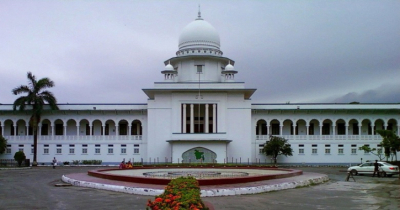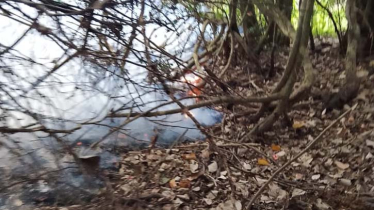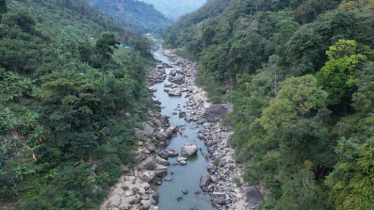
Photo : Messenger
In the aftermath of the devastating cyclone of 1991, a thousand acres of mangrove forest were created along the Banshkhali coast to protect against tidal surges and storms. Spanning coastal areas in Chonua, Gondamara, Saral, Katharia, Khankhanabad, and Baharchhara unions, this initiative provided crucial protection for local communities. However, most of these mangrove forests are now disappearing. Coastal lands near embankments and beaches, initially covered with mangroves, have been cleared for salt and shrimp farming, causing severe environmental impacts.
The cyclone of 1991 inflicted catastrophic losses on lives and property in Banshkhali. To prevent future disasters, two NGOs—Bangladesh-based UBINIG and Japan’s OISCA—planted mangroves along the coastal region with the help of local laborers and students, creating a green shield of keora and baine trees. However, over the years, large sections of these mangroves were cut down for shrimp farming, which has not only left the coastline vulnerable but also endangered the region’s biodiversity.
Currently, visitors to the beaches of Gondamara, Saral, Kadam Rasul, Katharia, and Baharchhara are greeted by rows of pine and baine trees, adding a scenic touch to the area. Yet, continuous erosion has taken a toll, stripping away these scenic views and leaving the biodiversity of the coastline at risk. Thousands of pine trees have vanished, and as a result, the natural beauty of Banshkhali’s beach is deteriorating.
On-site inspections reveal that coastal embankments in areas with mangrove, baine, and pine forests have remained relatively intact. The initial impact of tidal surges and strong winds hits these forests, providing some protection to the embankments. In contrast, areas lacking vegetation have suffered severe embankment erosion, leaving communities exposed to the sea’s relentless force.
Environmentalists emphasize that pine trees create small basins where water collects, which can accelerate erosion over time. To effectively combat erosion, they recommend planting coastal trees with stronger root systems, such as coconut trees, alongside pine trees.
Local residents, including Nurul Islam, Anwar, and Shahidul Alam, report that over the past two years alone, between 3,000 and 4,000 pine trees have been lost to erosion, encroachment, and illegal logging. Many of these trees, which once served as natural barriers against waves, have been destroyed due to neglect and lack of preservation efforts.
Humayun Kabir, a local shopkeeper from the Kadam Rasul area, reminisces about the scenic pine forests that once adorned the coastline. According to him, these trees were felled by individuals with vested interests, and river erosion claimed parts of the mangrove forests. Each monsoon, erosion worsens, further shrinking these precious green barriers.
Jainal Abedin, a member of Khankhanabad Union Parishad, expressed concerns about the lack of adequate measures for the preservation of these traditional pine forests that have beautified the coastline for decades. He emphasized that illegal encroachers are constantly felling trees, contributing to the accelerated loss of the mangrove forests.
Banshkhali Coastal Forest Officer Mahmudul Hasan Russel acknowledged the ongoing deforestation and damage to the coastal mangroves. He shared that in the 2023-2024 fiscal year, 60 acres of land in Saral, Gondamara, and Ratnapur were reforested with native trees. In the coming weeks, plans are underway to plant an additional 10,000 saplings along the Baharchhara and Raichhata embankments. However, adverse weather conditions have impeded efforts to collect and replant the pine trees uprooted by storms and tidal waves along the coast of Kadam Rasul and nearby areas. The trees will be retrieved when the weather improves, allowing the forestry department to resume restoration efforts.
This deforestation of Banshkhali’s coastline not only diminishes the natural charm of the beaches but also poses a significant threat to the ecosystem. With the constant erosion and loss of vegetation, the risk of devastating tidal surges looms large over coastal communities. The authorities need to act swiftly, restoring and protecting these vital mangroves to safeguard both the environment and the livelihoods of residents along the Banshkhali coast.
Messenger/Disha








